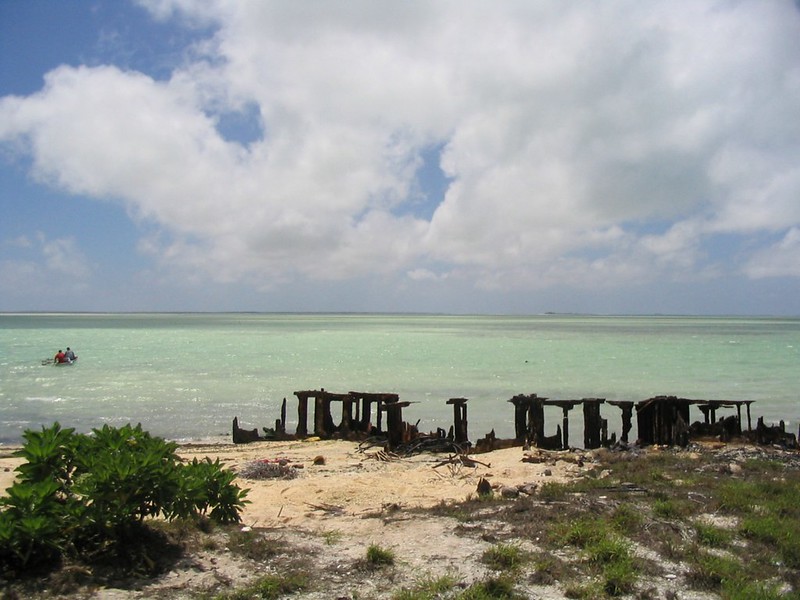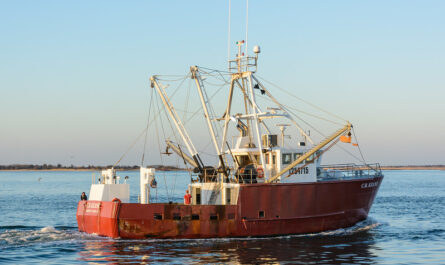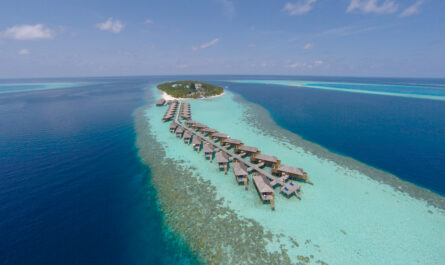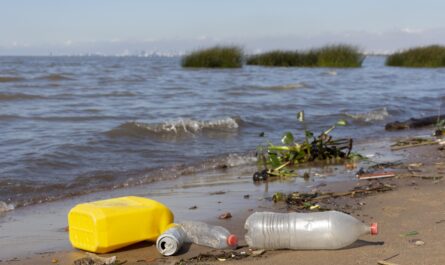Kiribati, a Pacific Island nation comprising 33 atolls and reef islands, is one of the world’s most vulnerable countries to the effects of climate change. As global temperatures rise, sea levels are increasing, and Kiribati, with an average elevation of just 2 meters (6.5 feet) above sea level, faces an existential threat. The combination of rising seas, coastal erosion, and frequent storm surges has left the people of Kiribati in a constant battle to preserve their land, culture, and identity.
1. The Reality of Rising Sea Levels in Kiribati
Kiribati, which spans an area of approximately 3.5 million square kilometers, but has a land area of only 810 square kilometers, is uniquely vulnerable to rising sea levels due to its low elevation and geographic dispersion. According to the Intergovernmental Panel on Climate Change (IPCC), sea levels could rise by up to one meter by the end of the 21st century, putting large parts of Kiribati underwater. However, even a smaller rise in sea level poses a significant risk to the nation. Many of its islands are already facing:
- Coastal Erosion: Waves from storm surges and tidal changes are eating away at the shorelines, reducing habitable land and damaging infrastructure.
- Saltwater Intrusion: As sea levels rise, saltwater is infiltrating freshwater resources, rendering groundwater undrinkable and destroying agricultural lands, which has dire implications for the nation’s food security.
- Increased Storm Surges: Higher sea levels increase the frequency and intensity of storm surges, which further erode the coasts and flood villages. The effects are being felt year-round, making it harder for communities to rebuild.
2. The Human Impact
The environmental changes in Kiribati are not just scientific projections but a lived reality for the nation’s 120,000 residents. The combination of land loss, water scarcity, and damage to homes and livelihoods is leading to what the Kiribati government and many scholars describe as “climate-induced displacement.”
- Water Insecurity: Most of Kiribati’s freshwater comes from groundwater lenses—thin layers of freshwater that sit above the seawater. Rising sea levels have caused saltwater intrusion, contaminating these water sources. Access to clean drinking water is now one of the most pressing challenges for the nation.
- Food Insecurity: Kiribati relies heavily on subsistence agriculture and fishing, but rising sea levels have made these practices increasingly difficult. Saltwater intrusion has made it harder to grow crops like taro and coconut, which are staple foods for the islanders. Additionally, the depletion of fish stocks due to overfishing and ocean warming has further strained the island’s food supply.
- Health Impacts: The deteriorating living conditions are leading to a rise in health problems, including water-borne diseases, malnutrition, and mental health issues caused by the stress of losing homes and livelihoods.
3. Government Efforts and International Response
The Kiribati government, led by former President Anote Tong and current President Taneti Maamau, has been vocal in advocating for stronger global action on climate change. They have been instrumental in raising awareness of the challenges small island states face and are pushing for meaningful international commitments to reducing greenhouse gas emissions.
- “Migration with Dignity” Policy: Faced with the potential reality that parts of Kiribati may become uninhabitable, the government has developed a “migration with dignity” strategy. This policy seeks to prepare the population for the possibility of becoming climate refugees, while ensuring that they migrate voluntarily and with dignity, rather than as a last resort.
- Land Purchase in Fiji: In 2014, the Kiribati government made a land purchase in Fiji, acquiring about 20 square kilometers on the island of Vanua Levu. This move is seen as a potential safety net for Kiribati’s population should the islands become uninhabitable. While the land may serve as a refuge, the Kiribati government emphasizes that relocation will be a last resort and that their priority is to maintain sovereignty and keep people in Kiribati as long as possible.
- International Assistance: Kiribati has received support from various international bodies, including the United Nations, Australia, and New Zealand, in the form of funding and technical assistance for climate resilience projects. These projects focus on building seawalls, improving water infrastructure, and promoting climate adaptation strategies.
4. The Global Climate Crisis and Kiribati’s Future
The future of Kiribati is closely tied to global action on climate change. Despite contributing very little to global greenhouse gas emissions, Kiribati faces some of the most severe consequences. The island nation’s plight is often cited in international climate negotiations as an urgent reminder of the need for rapid decarbonization and increased climate financing for vulnerable countries.
- Paris Agreement: Kiribati was one of the most vocal advocates for the Paris Climate Agreement in 2015, which aims to limit global warming to 1.5°C above pre-industrial levels. For Kiribati, even this target may not be enough to prevent catastrophic sea-level rise, but it offers a glimmer of hope for survival.
- Loss and Damage: Kiribati and other low-lying nations are also calling for more robust financial mechanisms to address loss and damage—the irreversible impacts of climate change that cannot be adapted to. This includes compensation for land loss, cultural heritage, and livelihood destruction.
5. Kiribati’s Cultural and Social Challenges
The potential displacement of Kiribati’s population presents not only practical challenges but also profound cultural and social dilemmas. Kiribati’s people have lived on these islands for over 3,000 years, and their connection to the land and sea is deeply ingrained in their identity and way of life.
- Cultural Heritage: Losing their homes would mean more than just the loss of land—it would entail the loss of language, traditions, and cultural practices that have been passed down through generations. Many in Kiribati see their islands as sacred and are reluctant to leave, even as the seas encroach on their shores.
- Mental Health and Community Stress: The constant threat of displacement has already begun to affect the mental health of Kiribati’s people. Anxiety, depression, and a sense of hopelessness have been reported, particularly among the youth, who feel uncertain about their future.
Conclusion: A Nation Fighting for Survival
Kiribati stands on the frontlines of climate change, embodying both the immediate threats of rising sea levels and the resilience of a nation determined to preserve its way of life. While the international community has made some progress in addressing climate change, for Kiribati, the situation is urgent. Without significant global action to curb greenhouse gas emissions and invest in climate adaptation, the fate of Kiribati—and other low-lying island nations—remains perilous.
As the world continues to grapple with the effects of climate change, the story of Kiribati serves as a poignant reminder that the choices we make today will determine the future of millions who live in vulnerable coastal regions.



